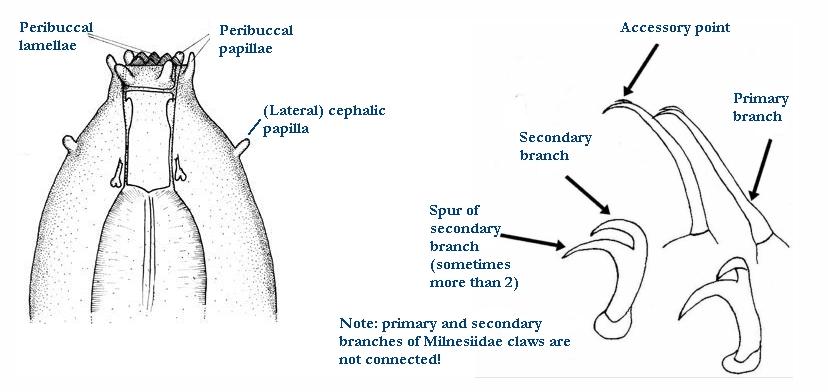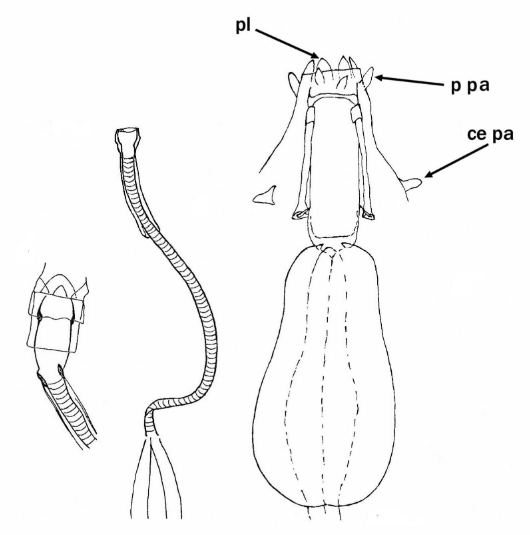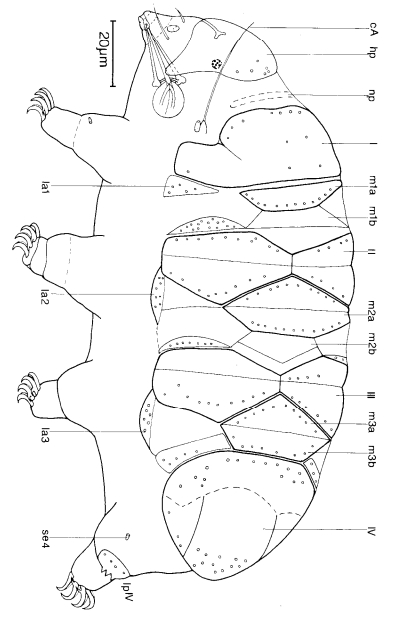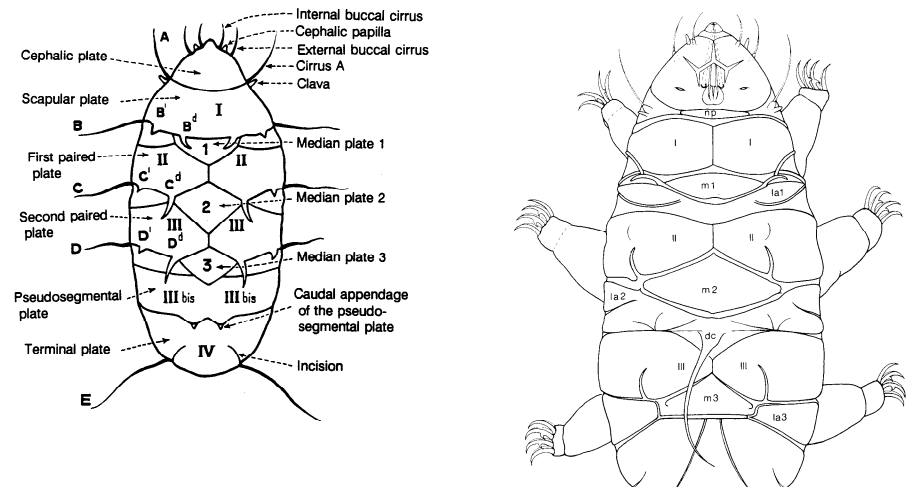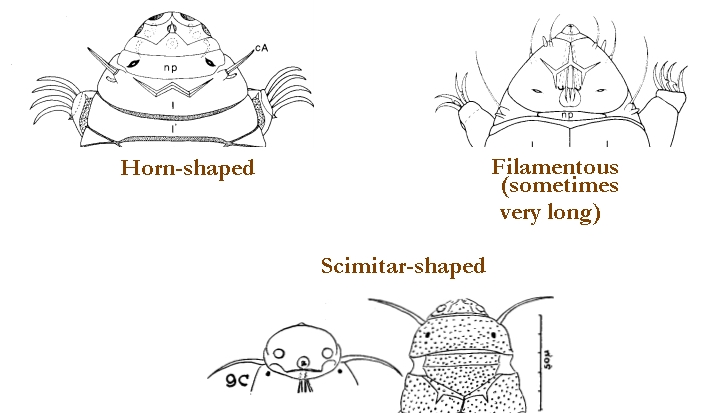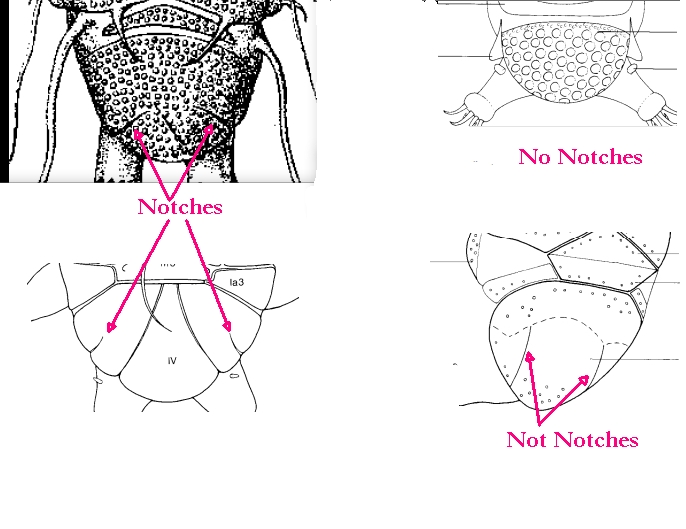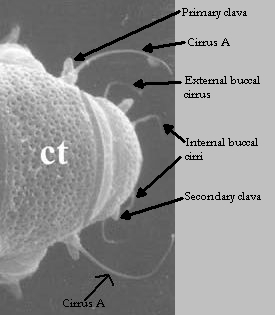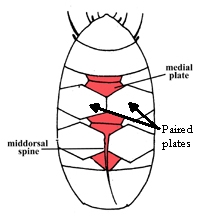Hexapodibiidae from Cesari et al. 2016: “Double claws asymmetrical with respect to the median plane of the leg (2121), or with only the mainbranch, with the secondary branch being reduced or sometimes absent on some legs. Claws of Hexapodibius type very short and without a common basal tract, with a base as large as the sum of primary and secondary branch widths, and with an evident suture between the primary and the secondary branch; claws of Haplomacrobiotus type with one branch only, eventually with small spurs on the fourth pair of legs. Lunules and other cuticular thickenings absent on the legs in the known species. Peribuccal lobes and peribuccal papulae present. Buccal–pharyngeal apparatus of the Hexapodibius type (according to Pilato & Binda, 2010) with a completely rigid buccal tube and with a ventral lamina; pharyngeal apophyses and placoids present in the known species. Eggs with smooth shells, laid within the exuvia”
Citations:
Cesari M, Vecchi M, Palmer A, Bertolani R, Pilato G, Rebecchi L, Guidetti R. 2016. What if the claws are reduced? Morphological and molecular phylogenetic relationships of the genus Haplomacrobiotus May, 1948 (Eutardigrada, Parachela). Zoological Journal of the Linnean Society. 178: 819-827.





